Abstract
1 The mechanism of histamine release from a pure population of rat mast cells induced by the lipid soluble antibiotic, A23187, has been studied and compared with data for anaphylactic histamine release reported in the literature. 2 Histamine release induced by A23187 in the presence of calcium 10(-3) mol/l was completed in 10 minutes. By preincubation of the mast cells with A23187 for 10 min in the absence of calcium the histamine release induced by calcium, 10(-3) mol/l or 5 x 10(-3) mol/l, was completed in 90 s and 45 s, respectively. 3 A23187-induced histamine release was maximal with calcium 10(-3) mol/l when the cells were incubated at 33 to 39 degrees C for 10 minutes. 4 The cellular mechanism, which was stimulated by A23187 and calcium for the release of histamine, was irreversibly inactivated by incubation at 45 degrees C. 5 An inhibition of energy metabolism was excluded as the cause of the heat inactivation. 6 The dependence of A23187-induced histamine release on calcium and temperature, the time course of histamine release and the heat inactivation are consistent with the view that the same mechanism is involved in A23187-induced and anaphylactic histamine release.
Full text
PDF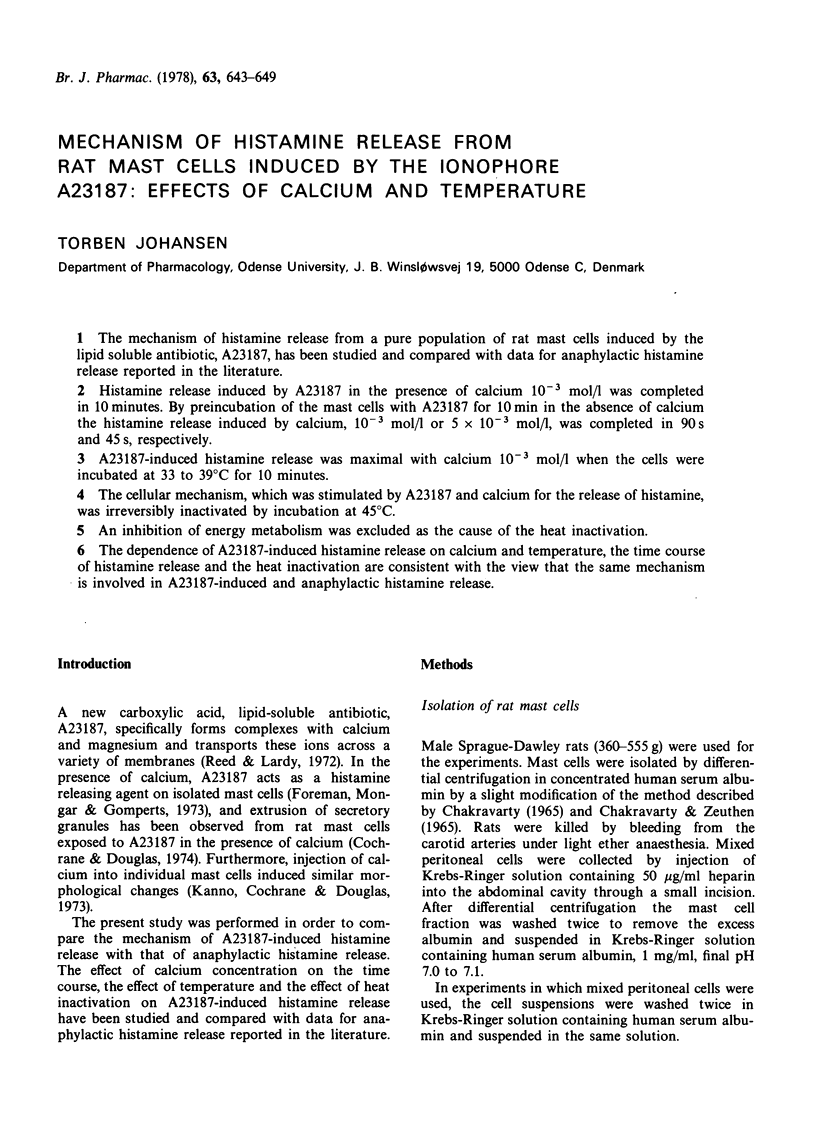
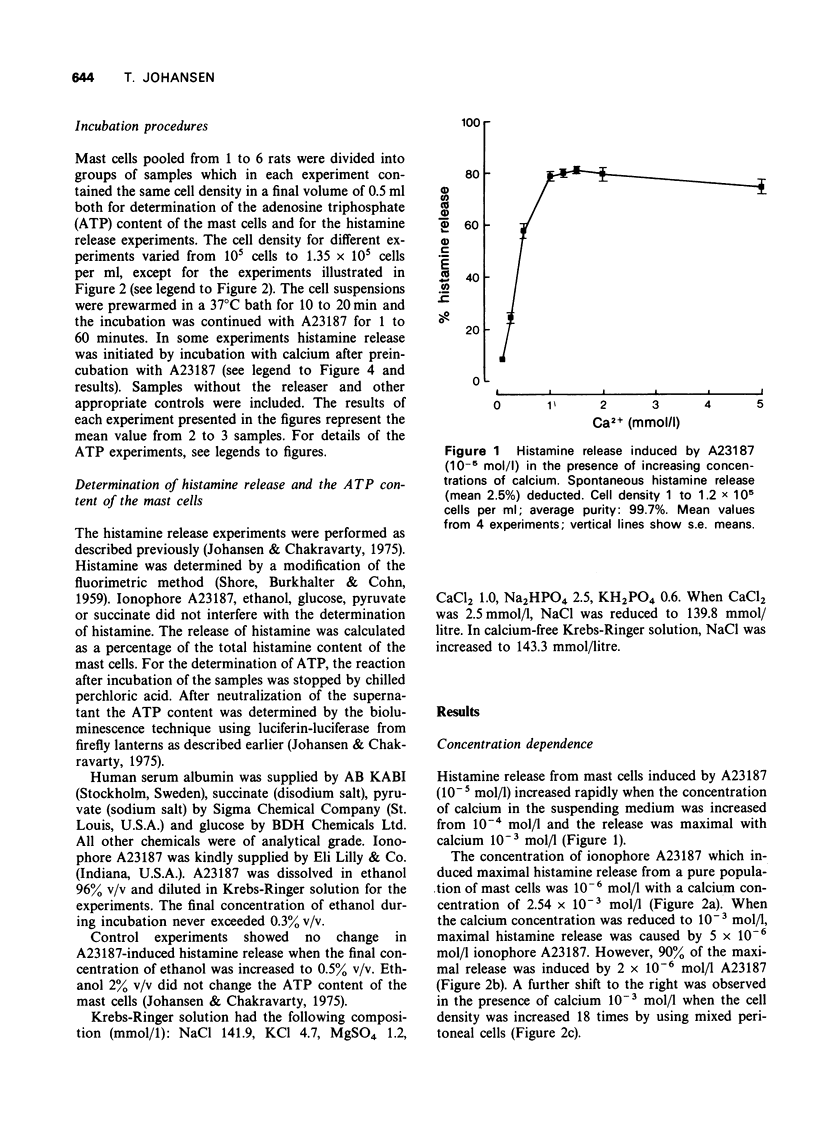
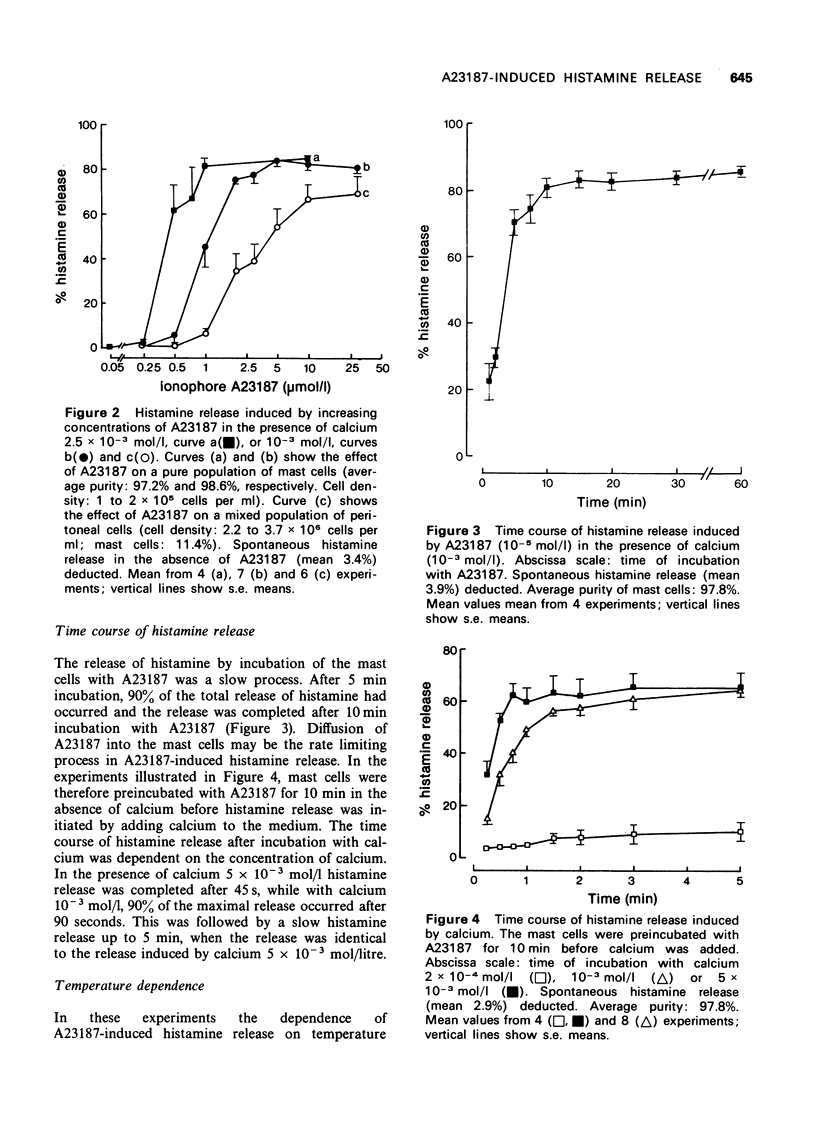
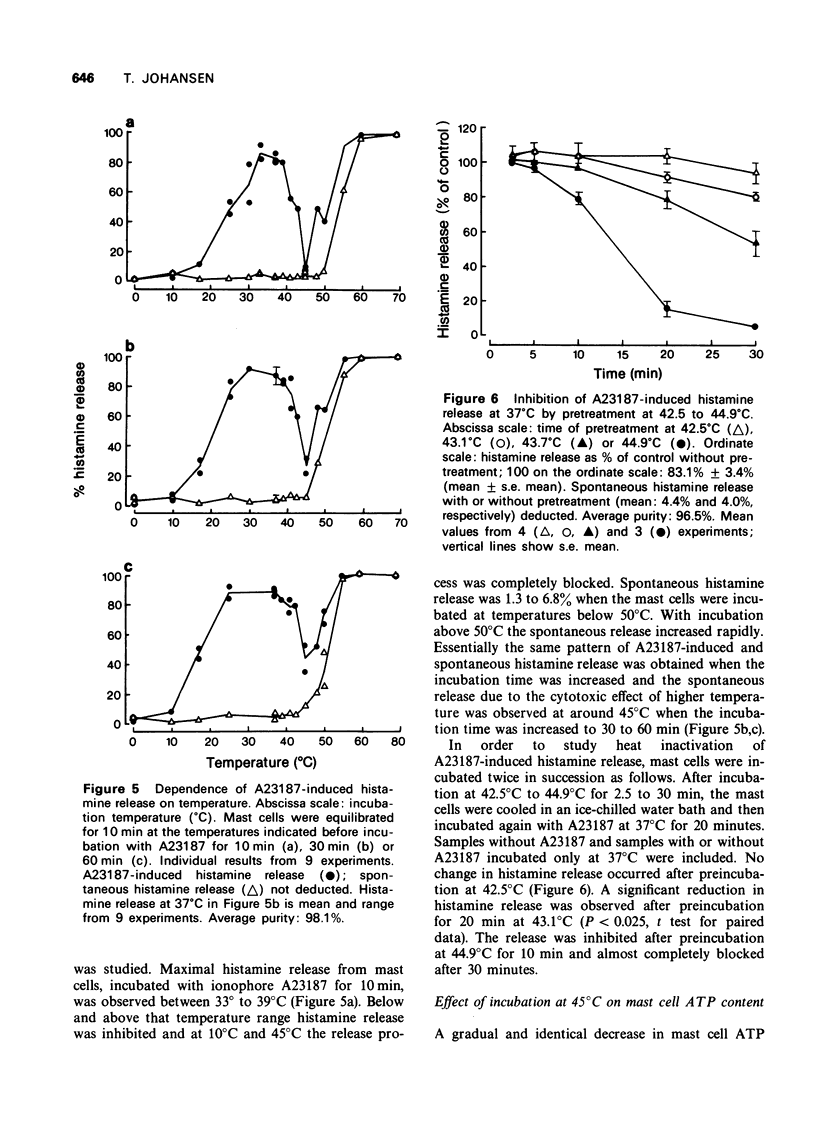
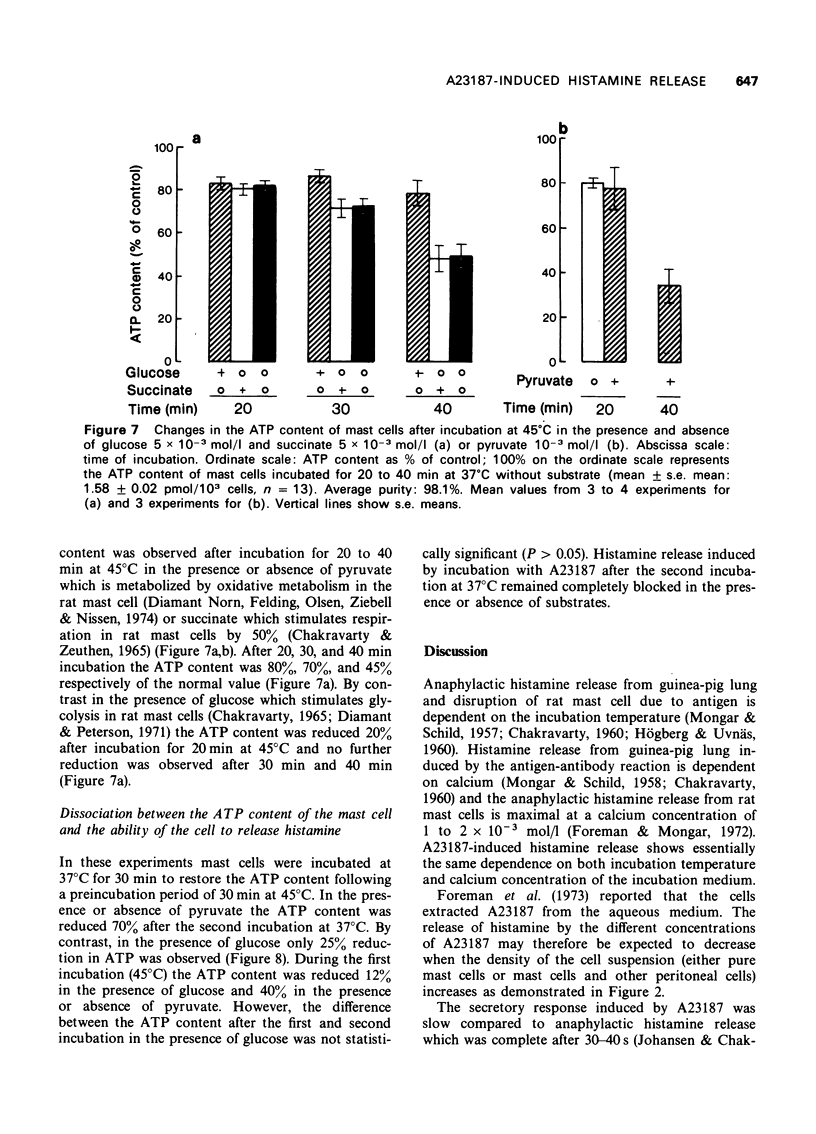
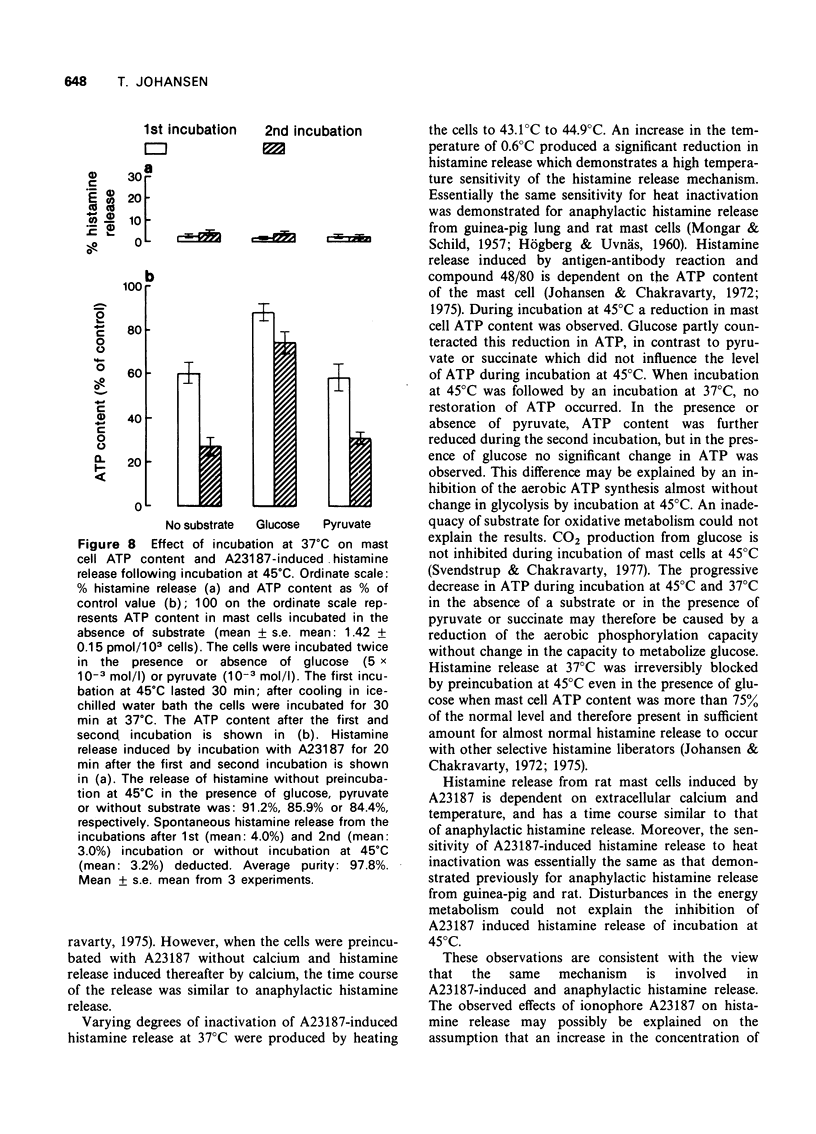
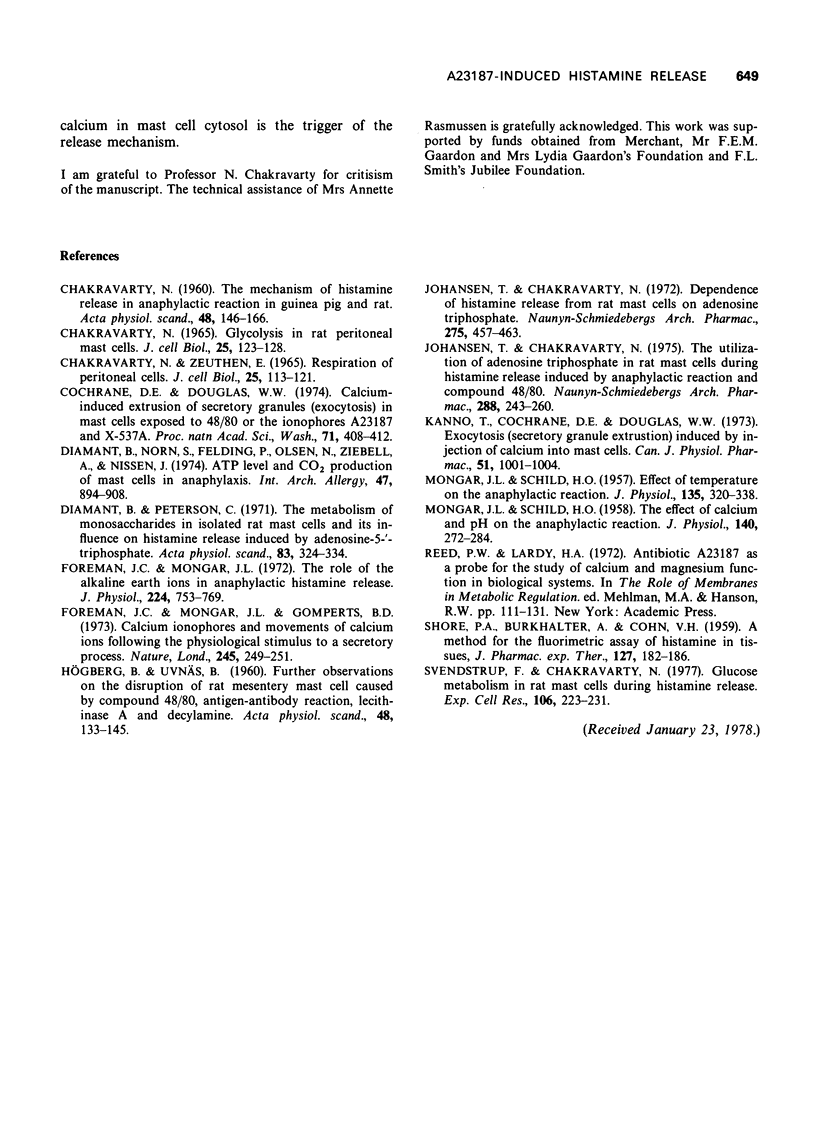
Selected References
These references are in PubMed. This may not be the complete list of references from this article.
- CHAKRAVARTY N. The mechanism of histamine release in anaphylactic reaction in guinea pig and rat. Acta Physiol Scand. 1960 Mar 18;48:146–166. doi: 10.1111/j.1748-1716.1960.tb01854.x. [DOI] [PubMed] [Google Scholar]
- Cochrane D. E., Douglas W. W. Calcium-induced extrusion of secretory granules (exocytosis) in mast cells exposed to 48-80 or the ionophores A-23187 and X-537A. Proc Natl Acad Sci U S A. 1974 Feb;71(2):408–412. doi: 10.1073/pnas.71.2.408. [DOI] [PMC free article] [PubMed] [Google Scholar]
- Diamant B., Norn S., Felding P., Olsen N., Ziebell A., Nissen J. ATP level and CO2 production of mast cells in anaphylaxis. Int Arch Allergy Appl Immunol. 1974;47(6):894–908. doi: 10.1159/000231280. [DOI] [PubMed] [Google Scholar]
- Diamant B., Peterson C. The metabolism of monosaccharides in isolated rat mast cells and its influence on histamine release induced by adenosine-5'-triphosphate. Acta Physiol Scand. 1971 Nov;83(3):324–334. doi: 10.1111/j.1748-1716.1971.tb05085.x. [DOI] [PubMed] [Google Scholar]
- Foreman J. C., Mongar J. L., Gomperts B. D. Calcium ionophores and movement of calcium ions following the physiological stimulus to a secretory process. Nature. 1973 Oct 5;245(5423):249–251. doi: 10.1038/245249a0. [DOI] [PubMed] [Google Scholar]
- Foreman J. C., Mongar J. L. The role of the alkaline earth ions in anaphylactic histamine secretion. J Physiol. 1972 Aug;224(3):753–769. doi: 10.1113/jphysiol.1972.sp009921. [DOI] [PMC free article] [PubMed] [Google Scholar]
- HOGBERG B., UVNAS B. Further observations on the disruption of rat mesentery mast cells caused by compound 48/80, antigen-antibody reaction, lecithinase A and decylamine. Acta Physiol Scand. 1960 Mar 18;48:133–145. doi: 10.1111/j.1748-1716.1960.tb01853.x. [DOI] [PubMed] [Google Scholar]
- Johansen T., Chakravarty N. Dependence of histamine release from rat mast cells on adenosine triphosphate. Naunyn Schmiedebergs Arch Pharmacol. 1972;275(4):457–463. doi: 10.1007/BF00501133. [DOI] [PubMed] [Google Scholar]
- Johansen T., Chakravarty N. The utilization of adenosine triphosphate in rat mast cells during histamine release induced by anaphylactic reaction and compound 48/80. Naunyn Schmiedebergs Arch Pharmacol. 1975;288(2-3):243–260. doi: 10.1007/BF00500530. [DOI] [PubMed] [Google Scholar]
- Kanno T., Cochrane D. E., Douglas W. W. Exocytosis (secretory granule extrusion) induced by injection of calcium into mast cells. Can J Physiol Pharmacol. 1973 Dec;51(12):1001–1004. doi: 10.1139/y73-153. [DOI] [PubMed] [Google Scholar]
- MONGAR J. L., SCHILD H. O. Effect of temperature on the anaphylactic reaction. J Physiol. 1957 Feb 15;135(2):320–338. doi: 10.1113/jphysiol.1957.sp005713. [DOI] [PMC free article] [PubMed] [Google Scholar]
- MONGAR J. L., SCHILD H. O. The effect of calcium and pH on the anaphylactic reaction. J Physiol. 1958 Feb 17;140(2):272–284. doi: 10.1113/jphysiol.1958.sp005933. [DOI] [PMC free article] [PubMed] [Google Scholar]
- SHORE P. A., BURKHALTER A., COHN V. H., Jr A method for the fluorometric assay of histamine in tissues. J Pharmacol Exp Ther. 1959 Nov;127:182–186. [PubMed] [Google Scholar]
- Svendstrup F., Chakravarty N. Glucose metabolism in rat mast cells during histamine release. Exp Cell Res. 1977 Apr;106(1):223–231. doi: 10.1016/0014-4827(77)90259-2. [DOI] [PubMed] [Google Scholar]


